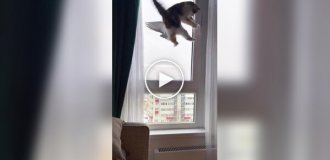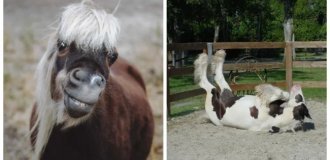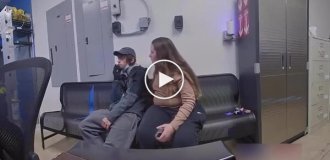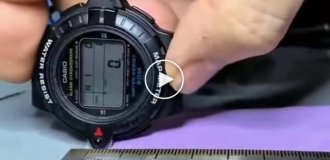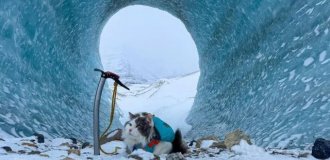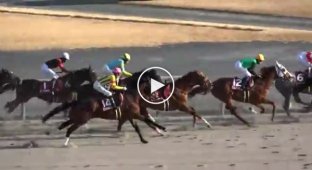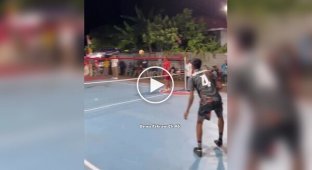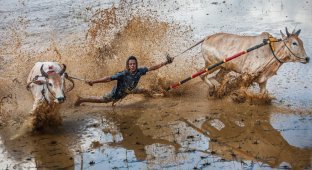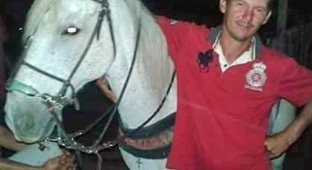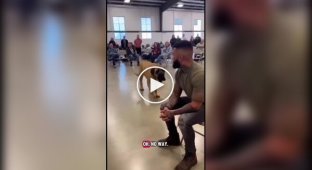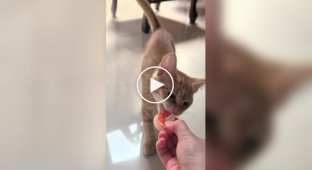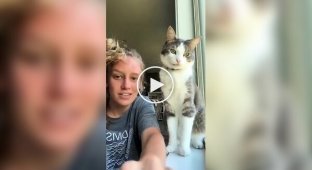A sad post. Why can't a horse's broken leg be cured? Even the best doctors have almost no chance (11 photos)
This is the story of a horse who could have become an equestrian legend. Barbaro is a bay stallion. He's three years old, his career has only just begun, but his results are already astounding. Barbaro has never lost a race! He's finished first in five of his five races. It seemed like a stellar future was assured. But one fateful race changed everything. 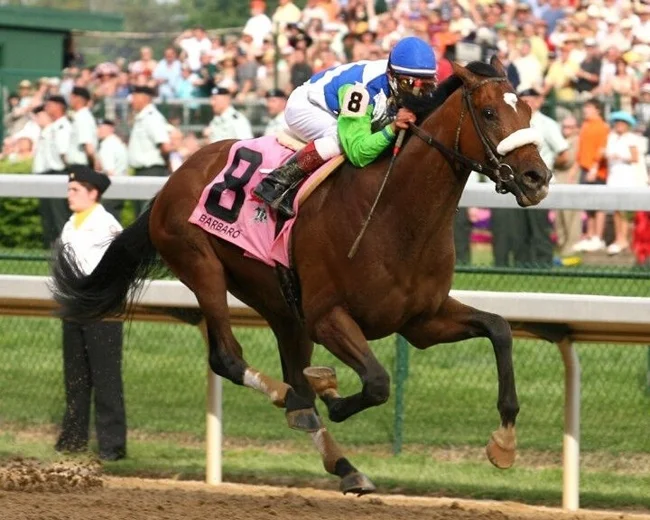
May 20, 2006. The Preakness Stakes is a prestigious thoroughbred horse race in the United States. The race lasts only two or three thrilling minutes—but in the moment, it feels like an eternity. And suddenly—what happened? Barbaro, who was once again head and shoulders above everyone else, suddenly stumbled! The dust obscured the stands as he tumbled head over heels, fell, knocked down his jockey, and tried to get up, but alas, his right hind leg no longer obeyed him. He panicked. The horse rose again, wanting to run—the adrenaline in his blood blocked the pain from the broken bones. But he fell again. A crowd of grooms rushed onto the track and grabbed the stallion by the bridle, calming him down and stopping him. A large black screen blocked the entire event from the spectators.
That fateful race. Barbaro doesn't yet know the difficult fate that awaits him. 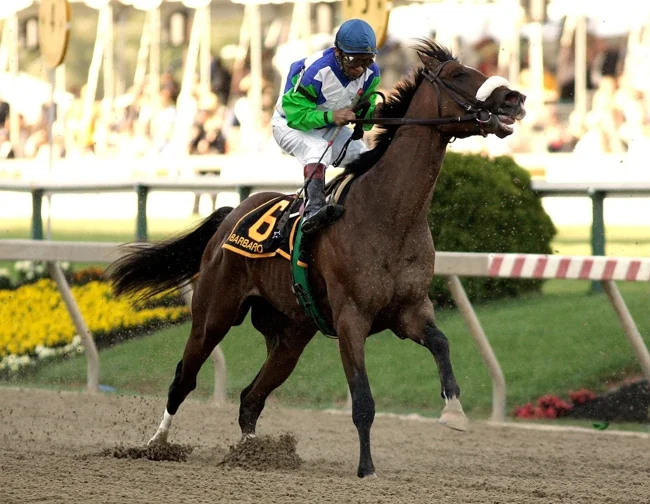
Equestrian sport is dangerous not only for horses, but also for people. Especially when half a ton of live weight lands right on you. 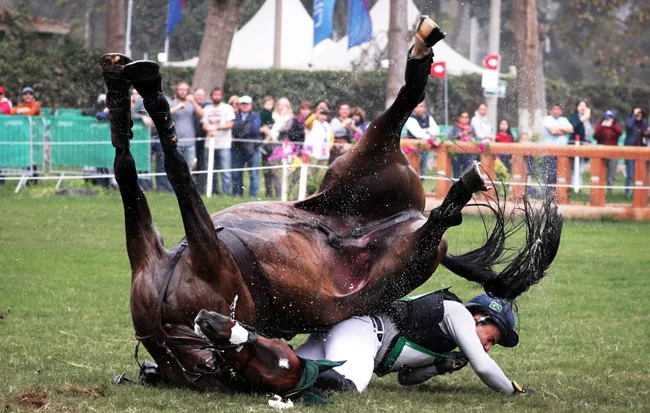
The other horses have long since reached the finish line. The winner was presented with a beautiful trophy and a blanket of roses, and now they are heading to the stables and resting. Barbaro is sedated, loaded into a car, and rushed to the best veterinarians. He is a valuable breeding stallion; they don't send him to the sausage maker's because of some broken bone.
Look at how unnaturally arched his hind hoof is. That's the broken one. 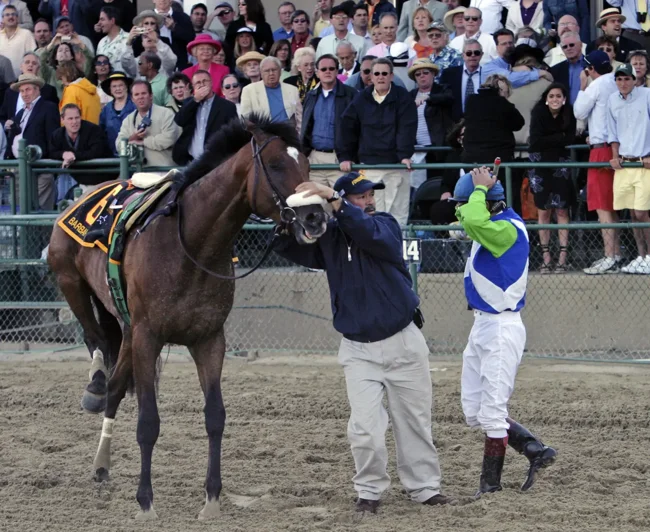
The veterinary clinic where Barbaro was taken is top-notch. It has everything from an X-ray machine to a special lift for horses that can't walk due to anesthesia. Barbaro is examined by the best vets, who take thousands of x-rays. But the diagnosis is dire: the stallion has broken his hind leg in more than 20 places. Sadly, the chances of recovery from such a trauma are virtually nil.
The owner doesn't yet understand how bad things are; he's willing to spend any amount of money on treatment, inviting doctors from other countries. Anything—just to get the horse back on its feet. Yes, he's barred from the track, but he can become a stud, which is also prestigious. Veterinarians explain all the risks, but the owner stands his ground. Doctors are putting people back together piece by piece, transplanting entire organs—can't they just put the horse in a cast?
Horses are sometimes given prosthetic limbs, but this is more of an experimental procedure than a widespread practice. 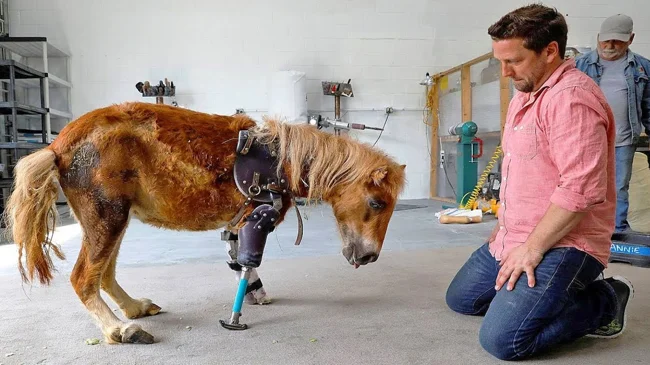
It's not that doctors "can't." Equine anatomy simply doesn't lend itself to treating such injuries. Evolution has stretched horses' limbs into springy "stilts." A complex system of tendons and ligaments allows them to cover enormous distances with minimal energy expenditure. Therefore, the lower part of the hooves has virtually no muscle. But when a fracture occurs, this becomes a huge problem—broken bones receive no nutrition or support, causing healing to occur several times slower than in humans.
Look at a horse's foot. It seems gigantic compared to a human's! 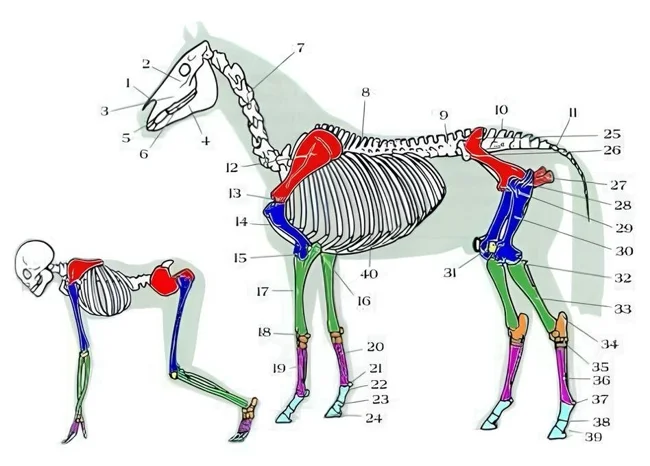
Another reason why a common fracture can be fatal for a horse is weight. A horse can't walk on three legs. Moreover, it can't even stand for long. It's physically impossible to evenly distribute a weight of nearly 500 kilograms across three stilt-like legs. There are only three options, and all of them are poor. First, the horse will be forced to put weight on the injured leg, which will delay healing even longer. Second, the horse will be hanging on special ropes that support its weight, making it unable to move. Third, the weight will be distributed across three healthy limbs, causing them to also become painful.
This is how horses are transported under anesthesia to the operating room. 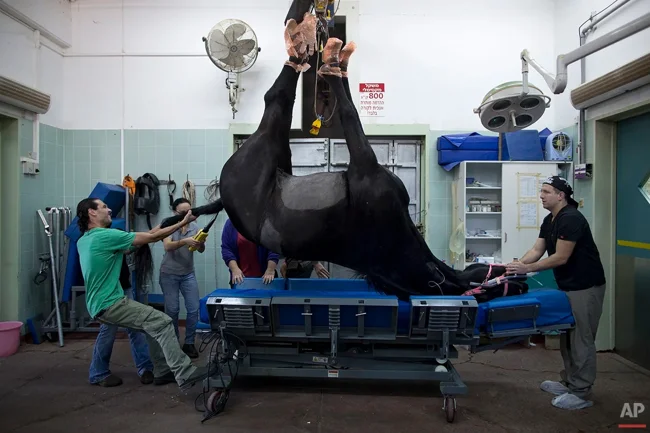
Note that in all these scenarios, the animal must be standing. But "bed rest" for a horse is a death sentence! Their body functions literally depend on movement. Inactivity causes the entire body to malfunction: the cardiovascular system, the gastrointestinal tract, the lungs.
Hurray, physical education! 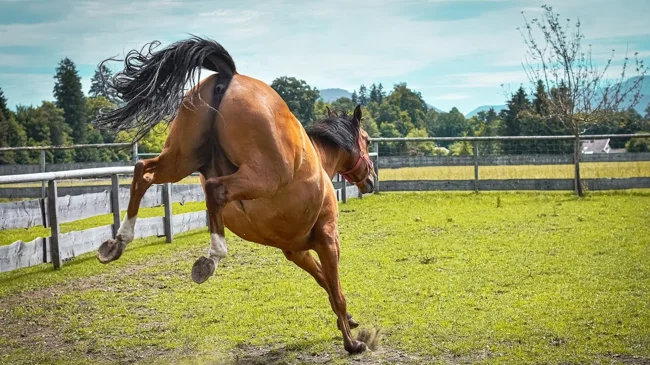
This is what the doctors explained to the owner of the stallion Barbaro, who had broken his hind leg during a race. Yes, it was a hind leg, so the chances are slightly better: horses carry about 58% of their weight on their front legs, so the hind legs are easier to treat. But the horse's fracture is complex, with multiple fragments and a dislocation—and even this doesn't stop the owner.
Barbaro at one stage of his recovery 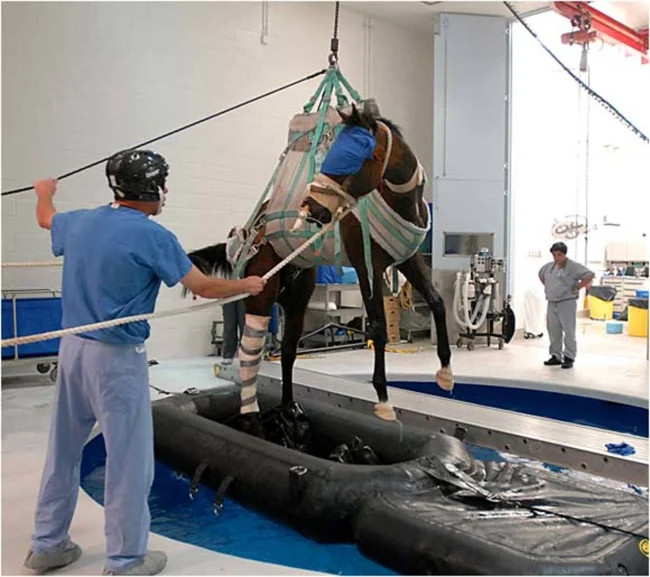
The doctors begin a long, six-hour surgery. They reassemble the hoof piece by piece with iron screws and plates, and apply a plaster cast. Everything went very well. The horse quickly woke up from anesthesia and seemed to be recovering. But trouble came from an unexpected direction. The stallion's other hind hoof developed laminitis, one of the most dreaded diseases in horses. The hoof became inflamed and infected. The stallion had to undergo surgery again, but on the other leg.
This is how horses wake up after anesthesia—masked, suspended, and in a room with padded walls to prevent them from hurting themselves. 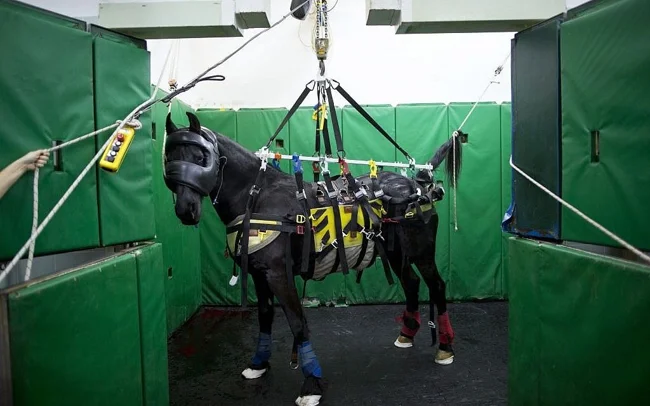
This is another difficulty in treating fractures in such large animals: due to improper weight distribution, the remaining limbs begin to suffer. They simply can't support the horse's weight. They decided to keep Barbaro on special ropes for a while to support his weight, as both hind legs were now in casts. But even after this, the horse didn't give up and began to recover again. A ton of painkillers, courses of antibiotics and anti-inflammatories. It seems it was all worth it. The horse is let out to graze in the meadow, and the owner cherishes a quiet hope that the worst is over. Even the fracture is almost healed.
After lengthy medical procedures, Barbaro was finally able to walk on all fours. 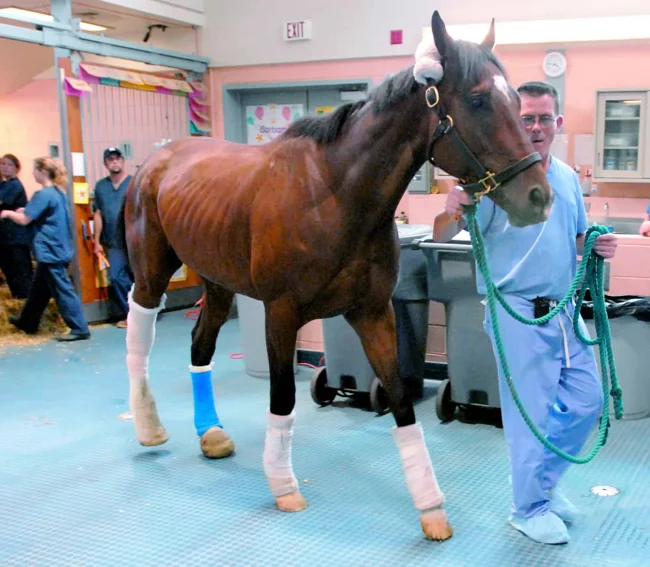
Unfortunately, this story has a sad ending. Due to a condition in both hind legs, Barbaro shifted his weight to his forelegs. Unfortunately, this led to laminitis in both front hooves. Laminitis is a long, painful, difficult, and often unsuccessful treatment. On January 29, 2007, the decision was made to euthanize the stallion.
Barbaro's treatment took over eight months, costing tens of thousands of dollars. He was cared for by the best doctors, received the highest-quality medications, and received first-class rehabilitation. But even the latest technology can't compete with nature.
This was the Book of Animals!
